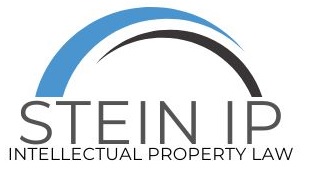- HOME
- > Blog Main Page
- > AI: THE INVENTORS OF THE FUTURE?
AI: THE INVENTORS OF THE FUTURE?
By Josue Rosario
The rapid advancements in artificial intelligence (AI) and technology have brought attention to the issue of securing patents for AI-generated ideas in the field of intellectual property. As AI systems continue to progress and exhibit remarkable capabilities in various domains, including healthcare, finance, creative arts, and scientific research, it becomes imperative to address the legal and ethical considerations surrounding the granting of patents to non-human entities.
AI-generated inventions are created through the analysis of extensive datasets, pattern recognition, and the development of novel solutions that often surpass human capacity. This raises a fundamental question: Can AI be recognized as the inventor or owner of these creations, and if so, can it be eligible for patent protection?
Can AI be a patent holder or an inventor?
Patent law currently only recognizes natural human beings as "persons" who can be designated as patent inventors or holders. If an AI system generates an invention idea, it becomes unclear if the human involved is just a channel or has significantly contributed to the conceptualization of the invention, since AI cannot do such conceptualization. Another challenge is ensuring that a patent application accurately and comprehensively discloses the best mode of the invention. This can be tough to determine if an AI system with an opaque development process generated the invention.
Thaler v. Vida
AI researcher Dr. Thaler submitted an application for two unique and patentable inventions in 2019. These patent applications were submitted in the United States, the United Kingdom, and the European Patent Office. The two inventions were a warning light designed to attract attention and a fractal food container. Dr. Thaler listed DABUS, the AI system he created, as the inventor, sparking controversy within the intellectual property community.
Regrettably, however, the United States Patent and Trademark Office (USPTO) quickly rejected the applications, stating that they were incomplete due to the absence of a valid inventor. The USPTO requested that the actual human inventors submit the patent applications under their names. Dr. Thaler filed a petition with the USPTO to withdraw the notices, but his request was denied. As a result, he filed a lawsuit against the USPTO under the Administrative Procedure Act in the U.S. District Court for the Eastern District of Virginia.
Unfortunately, the district court ruled in favor of the USPTO, granting their motion for summary judgment. The court's decision was based on the interpretation of the law, which defined an "inventor" as an "individual" according to the statute. The law explicitly referred to a natural or legal person.
In 2022, Dr. Thaler appealed the district court's verdict to the Federal Circuit, but his efforts were once again in vain (Thaler v. Vidal 43 F.4th 1207 (Fed. Cir. 2022)). The Federal Circuit examined the definition of "inventor" in the Patent Act, which stated that an "inventor" could be an individual or a group of people who contributed to the invention.
This ruling highlighted the idea that for an invention, the inventor must be either a living person or a recognized legal entity. The decision raised critical questions about invention ownership, responsibility, and the motivations driving innovation. It also ignited a broader conversation about the necessity of revising existing patent laws to better accommodate AI-generated inventions as the Federal Courts decision jeopardizes current and future investments in the technology industry and the U.S. competitiveness in innovation compared to other countries.
The Thaler v. Vidal case exemplifies the moral and intricate challenges that arise with AI-generated inventions. While AI systems like DABUS can generate innovative ideas, they are not legally recognized as inventors in many jurisdictions, including the United States, the United Kingdom, and the European Union.
In the wake of this case, the intellectual property community finds itself at a crossroads, pondering the implications of AI-driven innovation and the need for a reevaluation of patent laws in a world increasingly influenced by artificial intelligence. The debate rages on, and only time will reveal the path we ultimately choose to tread in this evolving landscape of AI inventors.
Top of Form
Bottom of Form
Navigating the Frontier: Patenting AI-Generated Ideas
To be considered an inventor, two important conditions must be satisfied. This comes from the Thaler case and the Patent Act. Firstly, the inventors must be a natural or legal person. Secondly, they must have actively participated in coming up with the invention or discovering what the invention is about. This means that, as per the existing legal rules, AI cannot be the sole inventor on a patent application.
However, this doesn't mean AI has no role to play. AI can certainly assist in the creative process and help uncover patent-worthy ideas. But when it comes to ownership and official inventorship, those rights belong to recognized legal entities or individuals.

TAGS:
RECENT POSTS
